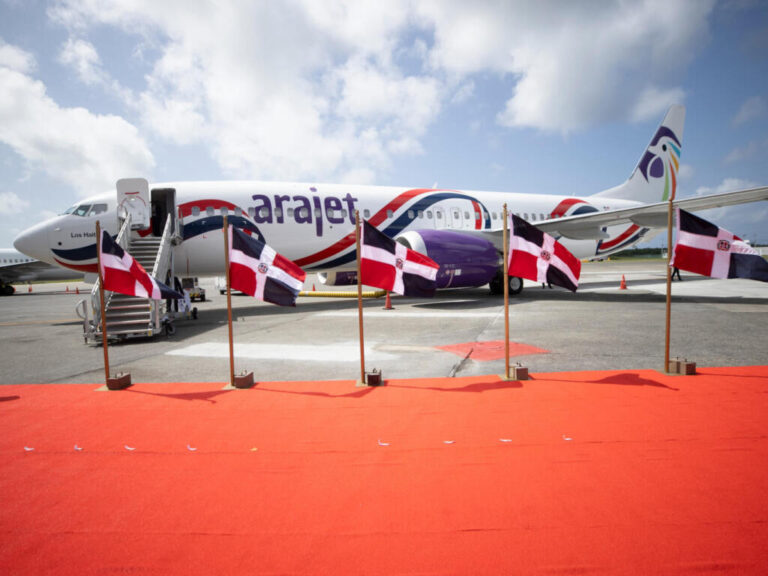En el año 2006, el Aeropuerto Internacional Punta Cana (PUJ) superó la frontera del millón y medio de turistas al recibir 1.72 millones, que representaron el 51.4% de los visitantes extranjeros por vía aérea. Desde hace 12 años, Punta Cana comenzó a recibir más del 50% de los turistas
internacionales que vienen al país.
En el 2007 los llegados a PUJ sumaron 1.77 millones, el 52.3%; en el 2008 fueron 1.84 millones, el 53.5%; en el 2009 se registraron 1.90 millones, el 55.7%; en el 2010 llegaron 2.01 millones, el 57.1%; en el 2011 llegaron 2.23 millones, el 60%; en el 2012 fueron 2.40 millones, el 61.3%; en el 2013 con 2.58 millones llegó al 63.6%; en el 2014 con 2.91 millones, al 65.2%; en el 2015 con 3.18 millones al 65.9%; en el 2016 sumaron 3.43 millones para el 66.9% y en el 2017 3.62 millones, el 67.6%.
En el período enero julio del año en curso el PUJ recibió más turistas que en los 12 meses del 2012, ya que llegaron 2.49 millones que representan el 69.7% de los visitantes extranjeros a nuestro país por vía aérea. Punta Cana ya está a un paso de tener el 70%. En el 2006 este aeropuerto con el 51% superó la cuota del 50% de los turistas; en el 2009 con el 55%; en el 2011 el 60%; en el 2014 el 65%, y este año pisa la línea del 70%.
La llegada al país de visitantes extranjeros por vía aérea sigue creciendo, pero Punta Cana crece más y las demás regiones decrecen o no aumentan suficiente.
Este año, por ejemplo, en los primeros siete meses, recibimos 3.5 millones de visitantes extranjeros por vía aérea, que es un poco menos de los 3.6 millones que vinieron a Punta Cana el año pasado en todo el año. De estos 3.5 millones Punta Cana recibió 2.49 millones, el 69.7%, con una tasa de crecimiento de 7.9%, en comparación con la del país que fue un 4.7%. Mientras, Las Américas decreció un -3.6%; Puerto Plata un -10.5%; La Romana un -14.6%, y el Catey aumento un 26.5%.
Siguiendo con el ejemplo, en el 2015 las llegadas al país crecieron un 6.5%, en Punta Cana un 7.9%; Puerto Plata un 9.1%, Las Américas un 3.1%. La Romana decreció un -1.0%, y El Catey aumentó un 10.4%. En el 2016 las llegadas al país crecieron un 4.3%, en Punta Cana un 5.5%; Puerto Plata un 10.2%, La Romana decreció un -0.2%, y El Catey un 11%.
Estas cifras confirman que el ritmo del turismo lo marca Punta Cana, la región que pone bonita las cifras y mueve la caja registradora del país y del Estado. ¿Esto es bueno o malo? Bueno, porque tenemos un motor que arrastra la máquina; pero sería mejor si todos los aeropuertos crecieran. Podemos lograrlo si hacemos la tarea
Fuente: El Caribe[:en]
In 2006, Punta Cana International Airport (PUJ) crossed the 1.5 million tourist milestone by receiving 1.72 million, which represented 51.4% of foreign visitors by air. 12 years ago, Punta Cana began receiving more than 50% of the international tourists coming to the country.
In 2007, 1.77 million arrived at PUJ, 52.3%; in 2008 they were 1.84 million, 53.5%; in 2009 there were 1.90 million, 55.7%; in 2010, 2.01 million, 57.1%; in 2011, 2.23 million arrivals, 60%; in 2012 they were 2.40 million, 61.3%; in 2013, with 2.58 million, 63.6%; in 2014, 2.91 million, 65.2%; in 2015, 3.18 million, 65.9%; in 2016 there were 3.43 million, 66.9% and by 2017 they were 3.62 million, 67.6%.
In January this year, PUJ received more tourists than in the 12 months of 2012, with 2.49 million arrivals, representing 69.7% of foreign visitors to our country by air. Punta Cana is already one step away from 70%. By 2006, with 51% of the arrivals, this airport exceeded the 50% share of tourists; in 2009 with 55%; in 2011, 60%; in 2014 it was 65%, and this year it will be along the lines of 70%.
The arrival of foreign visitors by air to the country continues to grow, but Punta Cana grows more while the other regions decrease or do not increase enough.
This year, for example, in the first seven months, we received 3.5 million foreign visitors by air, which is a little less than the 3.6 million that came to Punta Cana last year throughout the year. Of these 3.5 million passengers, Punta Cana received 2.49 million, 69.7%, with a growth rate of 7.9%, compared to the country which was 4.7%. Meanwhile, Las Americas dropped by 3.6%; Puerto Plata -10.5%; La Romana -14.6%, and El Catey increased by 26.5%.
Following the example, in 2015 arrivals to the country grew by 6.5%, in Punta Cana by 7.9%; Puerto Plata 9.1%, Las Americas 3.1%. La Romana decreased -1.0%, and El Catey increased 10.4%. In 2016 arrivals to the country grew by 4.3%, in Punta Cana by 5.5%; Puerto Plata 10.2%, La Romana decreased -0.2%, and El Catey 11%.
These figures confirm that Punta Cana marks the pace of tourism, the region with the sweet figures and moves the cash register of the country and the State. Is this good or bad? Good, because we have the motor that drives the machine; but it would be better if all the airports grew. We can do it if we do the homework.
Source: El Caribe[:]



